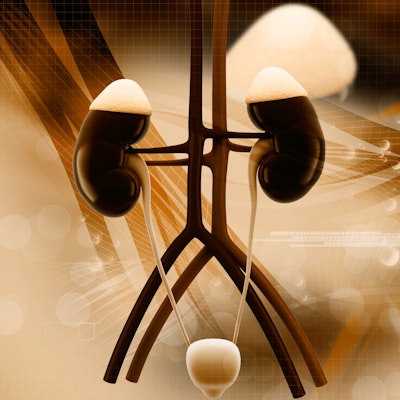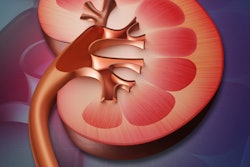
Ultrasound is a useful guide in determining lung congestion for hemodialysis patients at high cardiovascular risk, according to research presented on June 6 at the European Renal Association -- European Dialysis and Transplant Association virtual congress.
A team of researchers led by Dr. Claudia Torino from the National Research Council of Italy found that patients with end-stage kidney disease who underwent lung ultrasound showed significantly less frequent episodes of decompensated heart failure and major cardiovascular events.
"Ultrasound examinations are available virtually everywhere in the hospital environment and do not take long to perform, so they can be deployed to diagnose and treat an ominous complication like lung congestion in hemodialysis patients," Torino said.
Lung congestion is common for hemodialysis patients, including those at high cardiovascular risk. While x-ray imaging can detect heart alterations, they cannot be heard easily through a stethoscope.
For hemodialysis patients, lung congestion is a strong risk factor for mortality. Between dialysis sessions, all fluid that patients introduce is retained. Severe overhydration may follow, which can lead to heart decompensation.
Ultrasound has been shown to determine just how much lung congestion there is. This in turn can help clinicians adjust fluid removal during hemodialysis and drug therapies.
"Extravascular lung water can be easily measured by lung ultrasound, being quantified on the basis of the number of ultrasound B-lines," Torino said.
The team studied 363 patients from several hospital systems in Europe and Asia to see if ultrasound can improve patient outcomes over standard care, with 183 patients being tested with ultrasound and the remaining 180 patients in the control group. Out of those, 152 patients completed the ultrasound-guided study and 155 completed the standard care study.
The primary endpoints the researchers studied were mortality, heart attack, and decompensated heart failure. This strategy was compared with standard care in hemodialysis patients with a high cardiovascular risk.
Sonographers measured B-lines in images, with the target for hemodialysis management being less than 15 sonographic B-lines, a threshold that signified less fluid accumulation in the lungs.
Torino said the team used a 28-point lung ultrasound technique. Depending on the user's experience, scans took between three and 15 minutes.
| Impact of ultrasound on treatment of hemodialysis patients | ||||
| Control group | Ultrasound group | |||
| Change in number of B‑lines from start to end of study | 16 B‑lines | 30 B‑lines | 15 B‑lines | 9 B‑lines |
| Number of patients reaching target of less than 15 B‑lines | 85 patients | 117 patients | ||
| Number of patients reaching primary endpoint | 71 patients | 62 patients* | ||
Secondary analyses showed significantly less frequent episodes of decompensated heart failure and major cardiovascular events for the sonography group. For heart failure, lung ultrasound showed an incidence reduction rate of 63% while for cardiovascular events, that rate decreased by 37%.
"Because decompensated heart failure was not the primary end point of the study, new trials are still needed to confirm this finding," Torino noted.




















